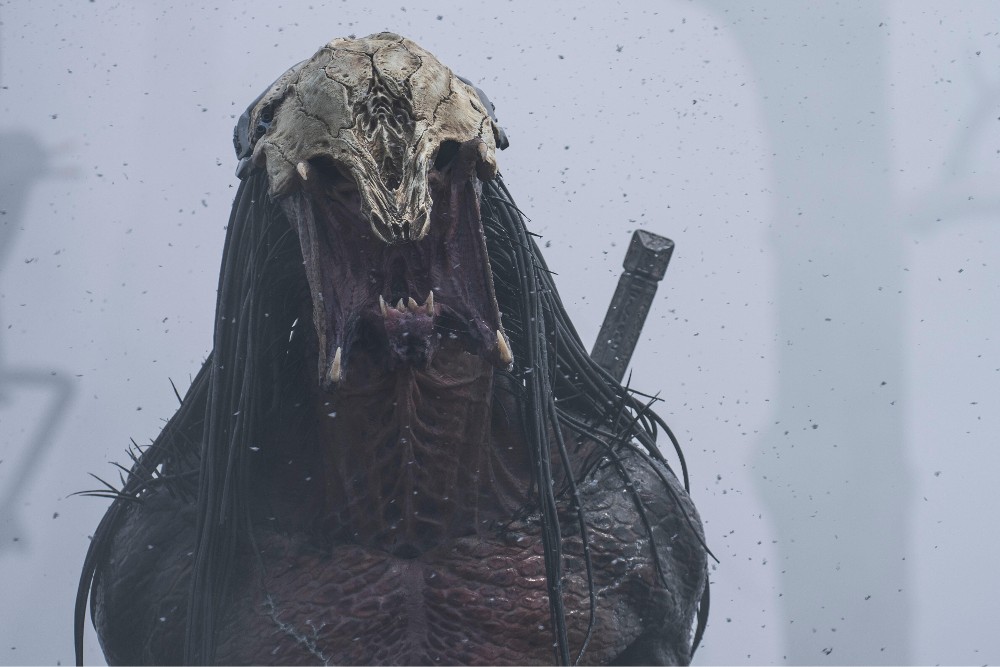
It’s been a full year since Dan Trachtenberg‘s Predator movie, Prey, debuted on Hulu, and it ended up being one of the most popular iterations of the sci-fi creature that first appeared in John McTiernan‘s action flick starring one Arnold Schwarzenegger.
The Predator is still killing anything that might make a nice souvenir on its belt of skulls, but Prey takes place in the past, 300 years ago, focusing on what happens when the Predator encounters the Comanche Nation. Specifically, it faces a fierce young warrior woman named Naru, played by Amber Midthunder, who is trying to prove her worth as a hunter as first animals and then humans start being killed by the alien hunter.
Prey received six Primetime Emmy nominations, including a nomination for “Outstanding Sound Editing for a Limited or Anthology Series, Movie or Special” for the 11 individuals who created a sound for Prey that’s quiet and serene at times, punctuated by the distinctive roars of the Predator. Earlier this year, the group won the Golden Reel for “Outstanding Achievement in Sound Editing – Non-Theatrical Feature” from the Motion Picture Sound Editors.
Recently, Below the Line had a chance to speak with Supervising Sound Editors William Files and
Chris Terhune, as well as Dialogue Supervisor Jessie Anne Spence, to get into the specifics about what was involved with creating such a distinct-sounding film. Read on to learn how they created that very distinct sound for the Predator, and the importance of honoring the Comanche Nation cast with every aspect of the film.

Below the Line: I see that you three don’t generally work together a lot. For this one, did you all came together through fate or destiny or a producer calling each of you. Or was one of you hired and they brought everyone else on?
Will Files: Chris and I had been working together for a number of years.
Chris Terhune: Since like 2015-16?
Files: We started working with Jessie on, I think it was on White Bird, wasn’t it Jessie?
Jessie Spence: Yeah, that was the first project.
Files: We did this Marc Forster film, and someone had recommended you for that. I can’t remember what the connection was.
Spence: It was the picture editor, Matt Chesse, he had worked with me before at Kings Mountainworks.
Files: So we were doing a movie with Marc Forster, a really good movie called White Bird, that still hasn’t come out. This is like an Oscar performance movie, so we got to meet Jessie on that one. We liked working with her, so we brought her onto a couple other projects, including Prey. It just worked out. Sometimes you meet people through other people — this business is very relationship-oriented.
BTL: And Chris, you came on at the same time as Will, pretty much?
Terhune: Yeah, Will and I came on through his buddy, Ben and Dan, and then Will brought me in to co-super with him. We were in it from the beginning.
BTL: Chris, you’re also alternately credited as a sound designer on some movies but on other projects as a sound effects editor. Can you maybe clarify the difference between the two for anyone reading this who might not know?
Terhune: I wear a lot of hats. Sometimes, I get brought on to just make some cool, unique sounds and bring character to certain tracks. Sometimes, I come in as a utility guy to cut most of the sound effects or just oversee projects, depending on what the show needs. It’s always kind of changing, but it’s all basically the same job.
Files: He’s downplaying it. Chris has been working on bigger projects and working in a more supervising capacity over the last few years, and it’s been a lot of fun to work with him in that way.
BTL: Chris, you also have three Emmy nominations this year on three different projects, all of which have amazing sound, so congrats on that, too.
Files: I’d just like to point out that this was Chris’s first feature film as one of the main mixers, and he got an Emmy nomination for it.
Terhune: Thank you, and then in one other category, I’m up against you and I’m up against myself.
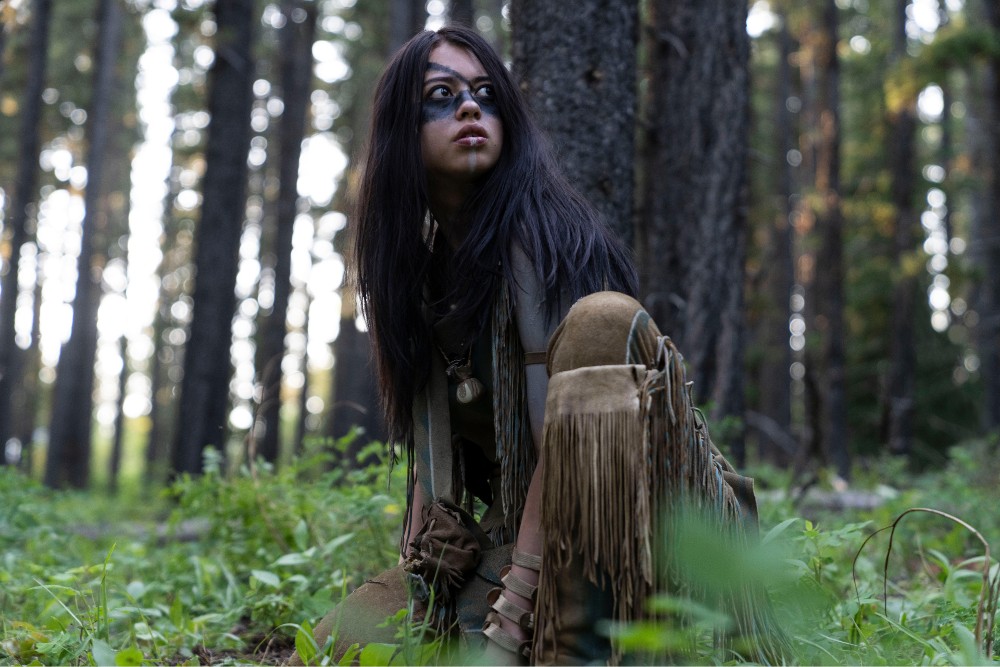
BTL: You stacked the odds there by having multiple projects in the same category. When I saw the number of sound editors working on this, I was really surprised until I watched the movie again, and realized how much sound work was involved with it. There isn’t that much dialogue, but how do you three end up working together and dividing things up? Are you working on different sections or are you always working together?
Files: We worked together the whole time. My role was kind of the overseer, in terms of managing the project, so I was the supervising sound editor, and I helped put the team together, and I deal with the budget and scheduling and that sort of thing. I then brought Chris in to be the co-supervisor, and to be the creative lead for the sound design and sound effects. And then I brought Jessie in to be the creative lead for the dialogue, including the Comanche, which we knew was going to be a major thing going into this, and it definitely turned out to be a major thing.
Spence: A major thing for sure, but ultimately, super-rewarding. A lot of work, but rewarding,
Terhune: Especially the Comanche dub, as a whole.
Spence: I wasn’t even involved with that, but just getting the language in the little bits and pieces that we did was fascinating. The guy who wrote the Comanche dictionary, his name is Guy Narcomey, he came in and would consult on every ADR session, and would train the actors how to say the lines. Everyone was so enthusiastic about it that made it a real joy.
BTL: As I watched it again last night, focusing on the sound, I was really impressed by how quiet it is. Much of the movie takes place in a forest, but there’s no forest that quiet, even if you’re using the dialogue from the set.
Files: That’s one of the challenges when you’re doing a period movie like this. They’re shooting out in the middle of woods and the forest, and of course, there are generators and trucks…
Spence: Planes, someone’s phone goes off.
Files: There are all sorts of things outside of the camera that don’t belong in this world whatsoever. That’s Jessie’s job to get rid of all that stuff, but keep the dialogue, and then it’s Chris’ job to fill the world back in with something that feels appropriate and also, that evokes the feeling that we want the audience to get from this visual.

BTL: Will, I assume you’re probably involved the earliest as the sound supervisor – were you involved before they even started shooting, or are you working on other things and get involved after they shoot?
Files: We try to get involved early, whenever we can. Sometimes with filmmakers that we’ve worked with before that works out and we can give them ideas based on the script or even give them ideas for the script. They can go off and shoot the film with those things in mind. Sometimes, we even make sounds to give to them to play on set, which is a thing that’s happening more and more with some of our projects. Chris, correct me if I’m wrong, I don’t think we had a chance to do that on this one.
Terhune: No, I think we came in way after they stopped shooting. We came in and did a quick Avid temp, pretty early on in the schedule, and that helped the way that track played early on. We didn’t get the chance to come in early on during production on that one.
Files: Usually, we come in during the director’s cut, when they get back from shooting, and they go straight into editing. As much as possible, we try to come in, at least to some degree, in that period of time, because that tends to be a really creatively rewarding time when the director is putting the film together for the first time, and they’re coming up with lots of ideas. It’s nice to be a part of that, even though the picture isn’t even close to locked at that point. It’s a good time to get involved, because we can throw ideas out there and help them find and hone ideas that they have before they get too set on some other ideas. It’s a really nice thing for us, even if it’s just to spend a couple of weeks during that period to do some exploratory sound design. We always try to get involved, as early in the process as we can.
BTL: I’m not sure what the timeframe was for this movie or if it was one of the projects that started before COVID but then got delayed due to COVID.
Files: It definitely was prolonged by COVID. The whole post process was during COVID. When we started, we were still having meetings outside, wearing masks inside at screenings. By the time we finished the mix, I think the mask mandate had ended by then. It was in post long enough that we went through all those different cycles of health code situations, but COVID made everything last longer, slowed down the post-production pipeline with visual effects. Everything got backed up, everything took a little longer, but in a way, I think it actually benefited this film. Because they had more time to hone the film and really get it down to its essence. It’s a pretty tight film, and I think for Dan, the director, there was a lot of looking at scenes and going, “Do we really need this beat?” They got rid of a lot of stuff, in the service of making it a really streamlined story. I think the film really benefited from it, because it’s such a tight, fun watch.
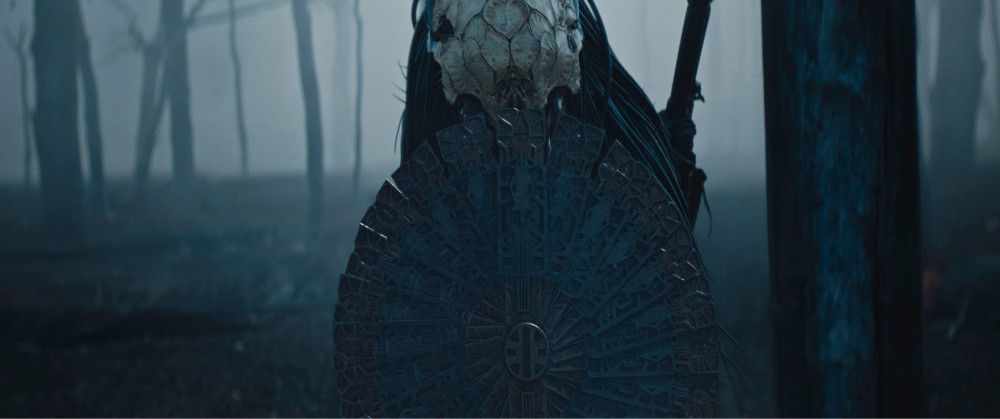
BTL: It seems like a lot of the things you were working on were happening almost concurrently. I don’t know if this movie was in between other things, or you did some work on it and went to do something else and then came back to it. It seems like a lot of the projects you three were working on would have been happening at the same time.
Files: There were a couple other things happening at the same time. We were doing Stranger Things Season Four at the same time. Chris, what else did you have going on?
Terhune: We had the hiatus that landed perfectly with the Lord of the Rings. COVID definitely helped us expand that schedule, but also, I think it gives everyone a chance to really sit with the material longer and actually just feel if they like it or not, if it’s doing the right thing, as opposed to like, “Oh, we’re getting ready for a mix. Let’s just throw everything we have out and figure it out then.” By the time we got to the mix, everything just felt fleshed out, and there was actual storytelling happening, which is always helpful.
Files: We had more time to try and fail and try again, which is always super beneficial for the creative process.
BTL: Are any of you handling the Foley aspects of the movie or are you just getting those before the final mix and getting them into the mix?
Terhune: I’m very hands-on with the Foley. We had a great Foley team, Alchemy in New York. They did a fantastic job, but they’ll do their edit, and then they’ll send it to us, and then we basically mix it in with our tracks. Especially a movie like this, where it’s so Foley forward, because of the forests and all the textures of the clothes, it all gets treated the same with the effects and the Foley in production just to make it all feel real and hand in glove. There’s a lot of just going over it over and over again to massage in a way to get it to feel the way you want it to.
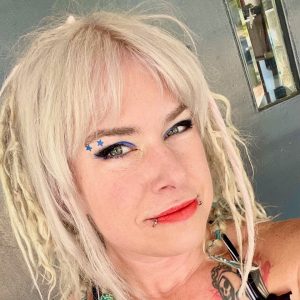
BTL: Jessie, when does ADR come into play? When do you start dealing with that and bringing actors back in?
Spence: As the dialogue person, we usually come on later. Effects guys always start first, especially on such an effects-heavy film, and then ADR comes quite late in the process, probably later than you would think. It was a lot of zoom ADR sessions ’cause all the actors were up in Canada. I remember Michelle Thrush, she played the mother, she was on set so far away from any sort of recording facility we had to hire a specific recording crew — two people — to go to her hotel room, pad it up for ADR, test all the mics and then when she came back, they would do it. She didn’t have many lines either, just a couple lines, but this whole process took two hours for two or three lines, and then she went on her way. One of the boys in the film had to drive two hours to get to the ADR stage, but they were all so excited about the project, all the actors and loop groupers all had some sort of Native American heritage or background. It was a big homage to their community, so everyone was really pumped about contributing to it.
We were talking earlier about the contrast between a fun horror movie franchise versus the seriousness of representing this old, respected culture, and how both were taken so seriously, but it’s such a weird juxtaposition. It was really fun from a dialogue standpoint. It was like a immersive lesson into this culture that I’ve never really known much about in my lifetime. Just being able to learn so much about it and talking to the director and the actors — there were these little things that I would have never caught watching the movie without knowing the behind-the-scenes cultural reference to it. I call them Comanche easter eggs.
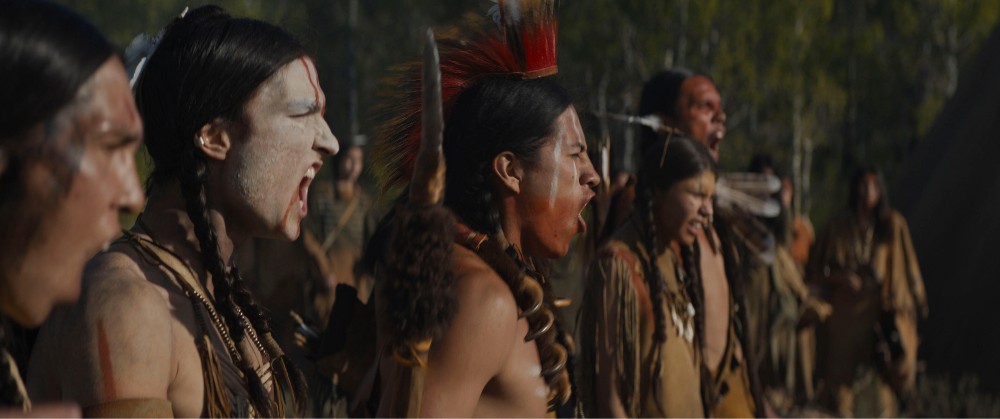
If you remember, there’s a scene where Naru decides that she’s gonna mess up the Predator. She’s at the fire, and she whistles at night, and he comes out, and that’s when he kills the French trapper guy. I had no idea about this until someone mentioned it to me during an ADR session, but anyone in the Comanche Nation doesn’t whistle after dark, because it’s supposed to summon demons out from the woods. I didn’t know this.She whistles because she’s trying to get the Predator to come out and get this trapper guy. That little thing I wouldn’t have known. There was something about how she’s got a scar on her arm, because when someone in your Comanche family dies, you scar yourself in their memory. Like I said, it was really immersive and fascinating to find out all these little things.
Terhune: What’s fun about that whistle, too, is we enhanced it with a death whistle, those whistles that have a female scream.
Spence: Oh, right. That was because Amber Midthunder, who plays Naru, they actually shot that at night, and she wouldn’t whistle. I did the whistle during the loop group, and then you took it and put the death whistle on it. It’s just like a little sound nugget thing that only we know about, but it’s a really cool story. There are a couple other cool little sound stories, too, like with Dan, the director’s daughter, and Angela, the film editor’s horse. I’ll let Chris take it from there.
Terhune: Dan recorded his daughter, originally for the opening village walkthrough, just to have some kids playing around. I ended up bringing that track in to the final battle, and one of the screams of his kid landed so perfectly on one of the Predator screams. He was out of the room, and we hit play. Obviously, it was funny, so we just left it, and we played the scene back for him. We didn’t tell him about it, so when the Predator screams, it’s just as kid giggling. It got this great laugh, but then we ended up keeping it in and adding to the layers of what made the Predator scream at that moment. I think we took more of his kid and just started layering it into all the screams, so the Predator’s scream actually has a little bit of Dan’s kid in it. [laughs]
BTL:I know that during COVID, a lot of sound engineers were sending mics and stuff to the actors for them to do their own recording.
Spence: The only weird situation, like I said, was with Michelle Thrush in the hotel room. Most people were able to travel to a stage, and I would connect by this software called Source Connect that I use. Sometimes, we had to just use Zoom to connect, which is weird, because there’s that lag. But we got what we needed, and it all sounded really good. I feel like at that point in the pandemic, people had already figured out the technology and made it better so that by the time Prey happened, we were pretty set as far as remote recording goes. Nobody lives here, so we’d have to do remote ADR anyway, even if they did live in town.
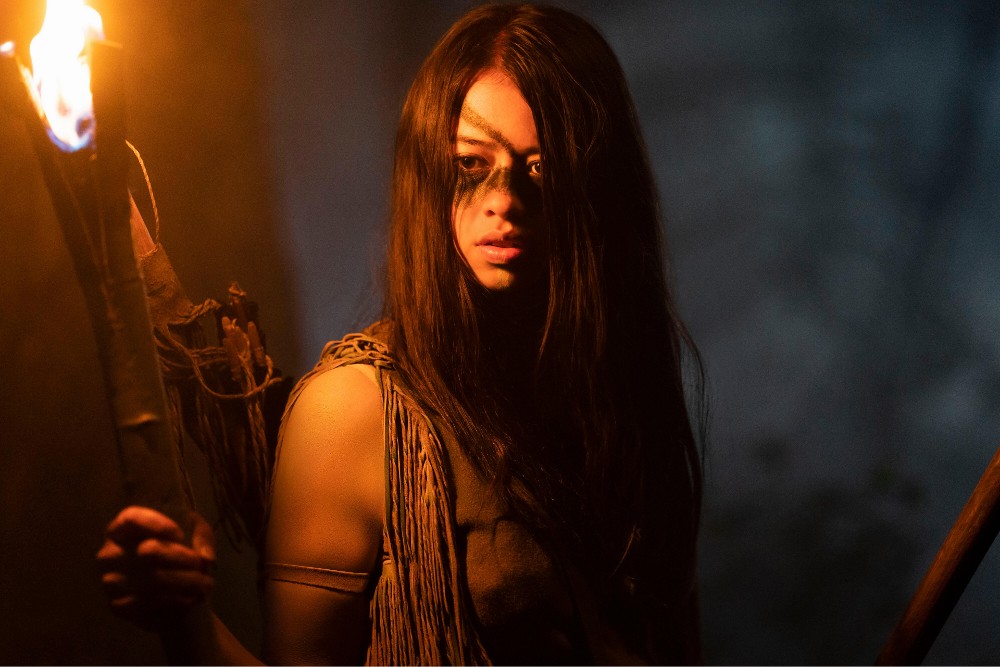
BTL: There’s one specific scene when a wolf is tracking this rabbit before that wolf gets killed by the Predator. It’s an amazing scene with no dialogue or music, just ambience and the animal noises. So what are you getting from set to use for a scene like that?
Spence: For that scene, specifically? Nothing. They had a trained wolf or dog, if I’m remembering correctly. There was no rabbit. It’s funny, when you first get a VFX-y scene, it’s always like a wolf with a piece of steak.
Files: We weren’t convinced that scene was going to work the first time we saw it, because the dog wasn’t great, either. That’s the funny thing. There was no rabbit, and the dog wasn’t great.
Spence: They made it work, though.
Files: They made it work. That’s the magic of editing. You can cut around a bad performance from a human or an animal or anything. And then, with some creativity, they made it into a really compelling scene, tonally. Again, a lot of that was down to a less is more approach where they took out anything superfluous and anything that wasn’t working, and they ended up with something that was pretty tight and concise. On our side, we just tried not to overwork it, so that there was some air in the track. So it wasn’t just totally full of sound; it’s sort of a suspenseful scene in some ways.
Terhune: There was a real Husky or wolf that they had on-set that got enhanced later with visual effects. But yeah, literally, did a version of it that was all storyboarded. I think Dan’s vision for that, ultimately, was to be like a classic Samurai — he reallly loves that kind of stuff, so that was his whole goal. Like Bill said, there was nothing really to work with, so we started with the sound of the storyboard, and then as versions came, where it started looking better, we would move it forward and make it better.
BTL: We should go back and talk about creating the sound of the Predator, which has become quite iconic from the number of previous movies.
Terhune: It’s fun to work on a film like this that has so many iconic, established sounds. You want to use those legacy sounds, because you want to also, respect the fan factor of it too. A Predator film without Predator sounds would just be another alien movie, I guess. How to use those, but make a new and make them sound like in today’s movies. There was a bit of that, and try to emulate the sounds that are old, and try to make your own versions of it. We made all our own new clicks, but the old roars, we tried to use the ins and outs of stuff just to let everyone know that we’re respecting that world. We tried to really do a fresh take on it, but make it feel very familiar.
Files: It took some R&D for for us to figure out how to recreate those sounds, which we really wanted to do, because we didn’t want to be tied to only using the old sounds. We wanted a wider vocabulary, if you will. We did quite a bit of R&D on our own, just to figure out how do they make these sounds? [We] tried a bunch of different stuff, and Chris found a formula using his own voice. Most of the creature’s sounds in the movie are actually Chris.
Spence: I love that you’re the voice of the Predator. That’s pretty badass.
Terhune: It’s a combination of stuff, because when you listen to the old recordings… I know there’s a lot of theories out there that it’s dolphins or birds or whatever. When you really listen to it, like it’s a human performance. Someone’s pushing the uvula to vibrate and do that performance. There’s just one night I was just in my living room, the lights were off, and I just had my iPhone, trying find it. After an hour of recording myself, I had a good version of it, and I just started doing it over and over. We ended up taking those recordings, and we have the super creaky door that my girlfriend calls the “Preda-door.” We ended up recording that, and in layering the transience of the vocal fry and the vibration with the door to kind of give it a harder attack, and basically massaged that and made a bunch of versions of that, and that’s pretty much how we came up with it.
BTL: Does your role also involve finding sounds for the dog barking to put into the mix? I know there was a real dog on set, but wasn’t sure that was that dog’s actual bark.
Terhune: There might have been a few times we used it.
Spence: Remember the walrus?
Terhune: Oh, a lot of walrus.
Spence: There was a lot of walrus in there, too. And remember on stage, Dan would say, “More walrus!”
Terhune: It didn’t matter what it was. “Juice up the walrus!”
Files: Did we use any of the production dog? I can’t remember.
Terhune: I want to say we did. The funny thing about that dog is, visually, it looks so well-behaved, but that dog is just not an actor. Apparently, they had such a tough time trying to get that dog to do what they wanted. You can’t tell watching the movie, but you can hear in the production, it’s whining and doing all these things that we can’t really use that, because she’s supposed to be tough at this point.
Spence: It wasn’t a SAG dog, because they had to have a specific dog breed for that timeframe and that area. Apparently, that was a very specific dog that they had to hire for this. When you’re listening between takes, you’re like, “What a pain in the butt.” But everyone was really patient with her. It was actually a girl dog who plays a boy dog who’s named Sarii, which is actually Comanche for dog. Yeah, so there’s a Comanche lesson today. [laughs]
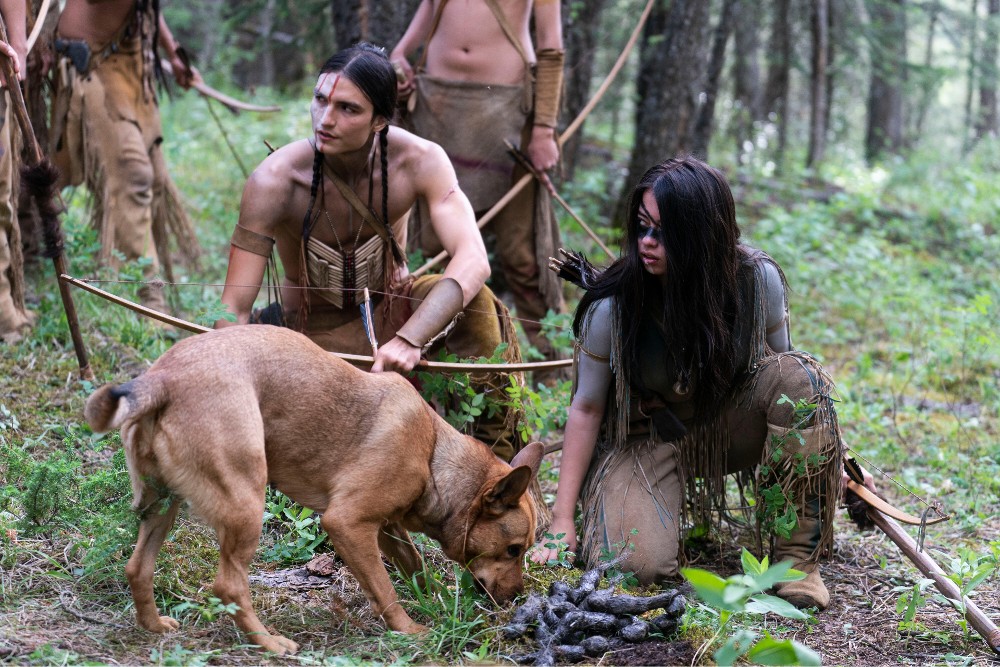
BTL: Will, I assume you’re at the final sound mix. Are the other two of you there as well?
Spence: We were all there.
Files: I got to watch the back of Chris’s head, which is fun, because it’s usually the other way around. I’m usually the one at the console, and he’s watching the back of my head, so it was nice to turn the tables on him for once.
Terhune: No pressure, just you and Craig watching me.
BTL: How and when was it decided that Chris would do the final sound mix?
Files: It was one of those things, kind of a natural progression. Chris has been doing a lot of mixing in the sound design process over the last few years, and I knew that he was capable of doing it, and I knew that it was time for him to step up and take that role. I also knew that Dan and Ben, the producer – they’re both good friends – and I knew they would be supportive of that idea. It was just one of those things that we thought was going to be a good fit. Chris knows these tracks better than anybody else. Let’s throw them in there, and make him battle for his life.
Terhune: It definitely was nerve-racking being my first final, that I’m actually mixing on. Once I sat down, it’s one of those things. It’s our work, but I’ve gone through these tracks, and like Will said, I know these tracks. Once I sat down, and I realized I’m doing the same thing. I’m just in a bigger room with people behind me. It was an easy progression for me to just be comfortable in.
BTL: Thanks for taking the time to talk to me, and congratulations again on your Emmy nominations.
Files: The main thing for us is we wanted to make sure that this was both an authentic Comanche experience and an authentic predator experience. That’s what’s so cool about this movie is that it manages to do both.
Prey can be watched via streaming on Hulu.You can also Jack Giroux‘s interview with Dan Trachtenberg here.





